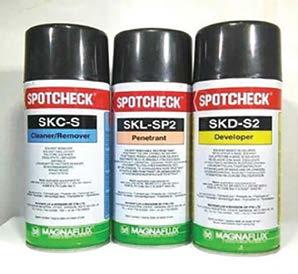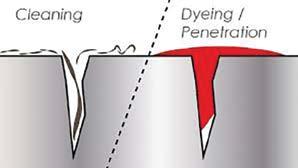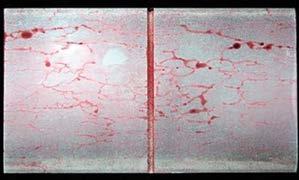
2 minute read
Classic BMW���������������������������������������������������
Magnetic Particle Inspection is performed in four steps: • Induce a magnetic field in the specimen. • Apply magnetic particles to the part’s surface. • View the surface, looking for particle groupings that are caused by defects. • Demagnetize and clean the part.
Dye penetrant inspection (DPI) is widely used to detect surface cracks. This non-destructive, three-part testing technique, also known as liquid penetrant inspection (LPI), is a method used to locate surface breaking flaws such as cracks, porosity, laps, seams and other surface imperfections.
Advertisement
The procedures for using these products are as follows: • Spray the part to checked with the cleaner SKC-S and wipe dry with a clean rag. (See Fig 9)

Fig� 9
• Apply Penetrant SKL-SP2 to the area that needs to be checked. Wait about 10 minutes for the product to wick into the crack(s). (See Fig 9) • Clean entire panel with a clean rag and cleaner. Do not spray cleaner directly to the panel, which will wash away the penetrant in the crack(s). • Follow the cleaning process with developer SKD-S2. Any crack(s) will be red in color. See Fig 10 for aluminum panel that was damaged and then repaired and welded. Notice all the cracks.

Fig� 10
Dye penetrant can be used on steel as well as aluminum. Fig 11 shows dye penetrant being used on a steel brake rotor.
Looking at the suspension parts, the wrecking yard sprayed penetrant on the aluminum parts, but did not apply developer. They charged for Magnafluxing, but they used dye penetrant. They should have disassembled the parts when they did dye penetrant. They also should have checked the knuckle for cracks.
Moving on to a used sub frame.

Fig� 11 Fig� 12

There are several things that need to done to this part prior to purchase. First and foremost, you will need to check for square. This can be done with a tram gauge that has adapters. (See Figs 13 & 14)
Since a subframe controls camber and caster, the part needs to be













